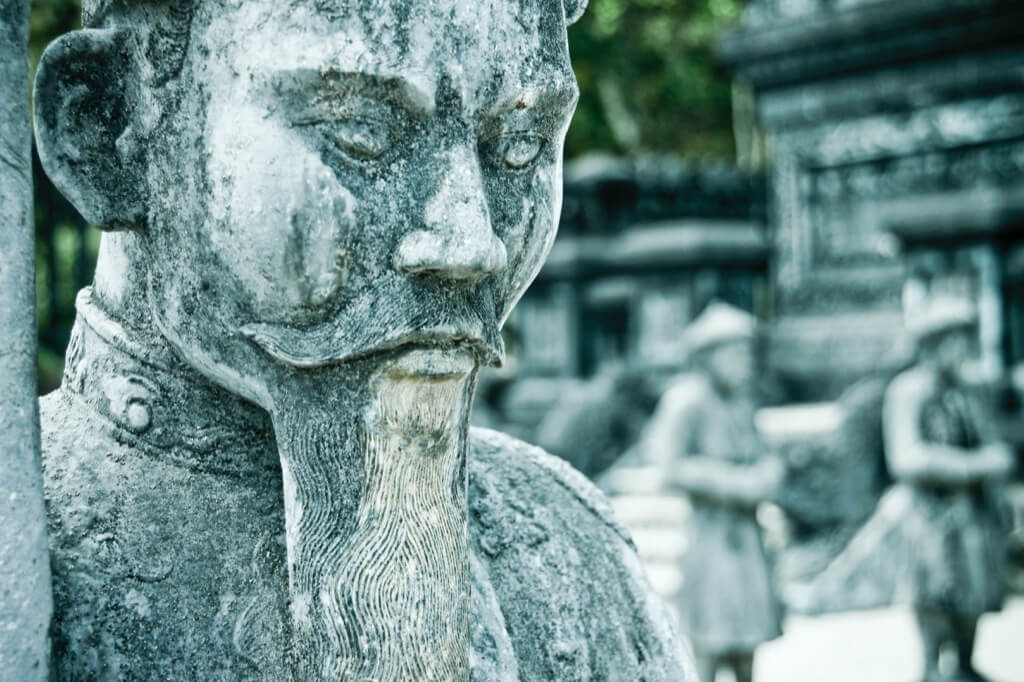Hatshepsut’s remarkable journey into history began with her birth, the daughter of King Thutmose I of Egypt and Queen Ahmose Nefertari. She was not an only child; the royal couple had two daughters. Yet, tragedy struck their family when her younger sister passed away at a young age. Little did they know that Hatshepsut’s destiny would be forever altered by this loss.
In ancient Egypt, dynasties and bloodlines played a pivotal role in the succession of pharaohs. Maintaining the royal lineage was of paramount importance, as it ensured the stability and continuity of the kingdom. This led to the practice of Egyptian pharaohs having multiple wives, including secondary spouses known as harem wives.
One might wonder why the male heir was so crucial in Egyptian royal succession. The answer lies in the belief that the pharaoh was not just a political ruler but also a divine figure, the intermediary between the gods and the people. Consequently, the continuity of the royal bloodline was perceived as essential to maintain the divine connection and preserve Egypt’s prosperity.
The Emergence of Thutmose II
Following the tragic death of her younger sister, Hatshepsut stood as the sole surviving child of King Thutmose I and Queen Ahmose Nefertari. However, Thutmose I, like his predecessors, maintained harem wives, introducing the possibility of sons from these unions ascending to the throne.
As fate would have it, Hatshepsut’s half-brother, Thutmose II, succeeded her father as pharaoh. Remarkably, Hatshepsut, at the tender age of twelve, found herself married to her half-brother, a union orchestrated to solidify his claim to the throne. The legitimacy of Thutmose II’s reign faced challenges, primarily because he was born to a harem wife of Thutmose I.
In ancient Egypt, royal marriages were not solely romantic unions; they carried profound political and dynastic implications. Marrying within the royal family aimed to strengthen the pharaoh’s connection to the divine lineage, reinforcing their right to rule. Such unions were not unique to Egypt and were common among many ancient civilizations.
Depictions from the reign of Thutmose II reveal Hatshepsut in the role of a submissive queen. The engravings, while reflecting traditional gender roles of the time, also highlight their inability to produce a male heir from their union. Nevertheless, they were blessed with a daughter, Neferure.
Tragedy struck again when Thutmose II passed away, leaving an infant son from one of his harem wives as his successor. The boy, Thutmose III, was far too young to assume the responsibilities of pharaoh, setting the stage for a significant shift in the kingdom’s leadership.
During this crucial juncture in Egypt’s history, Hatshepsut stepped into the role of regent for her stepson and nephew, Thutmose III. This transition was not unprecedented; it was customary for widowed queens to assume regency when the designated male heirs were deemed too young to rule. Engravings from this period depicted Hatshepsut guiding the young Thutmose III in his early pharaonic duties.
What followed was a momentous decision that would reshape the course of Egyptian history. Hatshepsut, taking the reins of power, formally declared her intention to rule as pharaoh alongside Thutmose III. While the notion of a female pharaoh was not entirely unheard of in ancient Egypt, it typically occurred when the royal line had no male successors.
Historically, Egyptologists speculated that Hatshepsut’s decision to assume authority was driven by ambition and a thirst for power. However, modern perspectives challenge this theory, suggesting a more nuanced motive. Recent research and analysis point to the possibility that Hatshepsut’s rise to the throne was prompted by a need to safeguard Thutmose III’s reign, echoing the circumstances of his father’s ascent to power.
To understand this shift in perspective, we must consider the intricate web of Egyptian politics and power dynamics. Thutmose III, although young, was very much alive and represented a potential rival to Hatshepsut’s rule. The question arises: Why didn’t she eliminate him as a threat during her reign?
The Scholar-King in the Making
The answer may lie in Hatshepsut’s meticulous strategy for the kingdom’s future. Rather than disposing of Thutmose III, she ensured he received an elite education—an education typically reserved for priests and scribes. Her decision to provide him with such a rigorous upbringing suggests a different motive. Thutmose III’s journey did not end with education. He later enlisted in the Egyptian army, where he demonstrated his worth as a capable leader. Hatshepsut recognized his potential and appointed him as the head of her army.
What emerges from this historical puzzle is a unique dynamic between Hatshepsut and Thutmose III. Contrary to the conventional narrative of power struggles, the evidence suggests a working partnership. Rather than using her authority to suppress him, Hatshepsut employed her influence to groom Thutmose III as her successor.
The Rise of a Scholar-King
Thutmose III’s journey under Hatshepsut’s guidance led to his ascent as a scholar-king. He would later earn the moniker “Napoleon of Ancient Egypt” for his exceptional leadership and military acumen. Hatshepsut’s role in shaping his destiny underscores her commitment to the kingdom’s stability. Hatshepsut’s reign was characterized by her bold transformation into a male pharaoh. Engravings and sculptures from this period depict her donning the attire of a male ruler, complete with the iconic false pharaoh beard and regal garments.
To legitimize her rule, Hatshepsut wove an intricate narrative. Engravings in her tomb temple suggest that her father, Thutmose I, desired her to succeed him as pharaoh. Another account, equally compelling, recounts the goddess Amun’s appearance to her mother in the form of Thutmose I on the night of Hatshepsut’s conception. According to legend, Thutmose I implored the Egyptian deity of creation, Khnum, to craft a daughter surpassing all gods.
If Hatshepsut governed Egypt for nearly twenty years—significantly longer than most pharaohs—it suggests that her narrative held sway over her subjects. Alternatively, she could have cultivated alliances among government officials to consolidate her authority. Either way, her reign coincided with a period of abundance and relative tranquility in Egypt.
Hatshepsut’s legacy as one of Egypt’s most prolific pharaohs is exemplified by the multitude and scale of the massive construction projects she oversaw during her reign. Her ambitious building initiatives left a lasting imprint on Egypt’s architectural landscape. Moreover, she established and nurtured several trade networks, enhancing Egypt’s wealth and influence on the international stage.
The Legendary Expedition to Punt
Among her many accomplishments, one of the most renowned is her legendary trade expedition to the land of Punt. This venture is immortalized in ancient reliefs and texts. The journey to Punt not only solidified diplomatic relations but also brought back exotic goods and resources, enriching Egypt’s treasury.
Around 1458 BC, according to historians, Hatshepsut’s reign came to an end with her passing. While her death was a historical fact, the exact cause has been the subject of speculation and debate among scholars. Most theories point to diabetes-related complications or bone cancer as the likely culprits.
In the annals of ancient history, Hatshepsut stands as a visionary ruler who defied convention and reshaped Egypt’s destiny. Her reign, characterized by her extraordinary rise to power, her strategic partnership with Thutmose III, and her unparalleled building projects, leaves an indelible mark on Egypt’s rich history.

